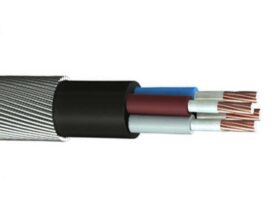Multi-core wires or cables are different from single-core electric wires and cables in terms of their construction and application.
Construction: Single-core wires and cables consist of a single strand of conducting material, typically copper, surrounded by an insulating material. These are used for carrying high-voltage electricity over long distances.
On the other hand, multi-core wires and cables consist of multiple strands of conducting material, typically copper, that are bundled together and surrounded by an insulating material. The number of strands or cores can vary from two to hundreds depending on the application.
Application: Single-core wires and cables are generally used for high-voltage, low-current applications, such as in power transmission and distribution, whereas multi-core wires and cables are typically used for low-voltage, high-current applications, such as in electronics, appliances, and machinery.
Multi-core cables are also preferred in applications where flexibility is required, such as in robotics and automation, as they allow for greater movement and flexibility without breaking the wires.
In summary, while single-core wires and cables are typically used for high-voltage, long-distance applications, multi-core wires and cables are used for low-voltage, high-current applications that require greater flexibility and maneuverability.












Leave a Reply